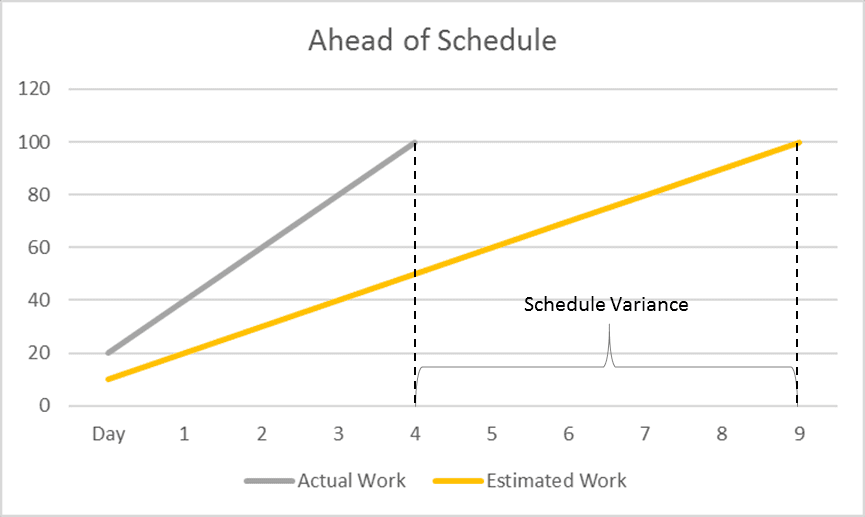Gap Analysis is a strategic planning tool to help understand where a project is, where it needs to be, and how to get there.
For a simplistic take, here is a project chart showing project status:

As you can see, there were four planned tasks and each was behind the required status by at least one unit. From this data, you can analyze the gap in 5 basic steps.
Step 1: Examine the data. Where are the areas that need assessing on the project? For project management we use a set of calculations referred to as Earned Value Management (EVM). The three pillars of EVM are cost, quality, and time. Agile, waterfall, or RUP; it’s always the same. These three values are always used to determine project status.
Step 2: Identify where the project is right now based on those metrics. Keep in mind a metric can be a value of a single unit, but gap analysis always measures a minimum of two of the same values.
Examples:
- Cost – Is the project over or under budget, or is the spend rate sustainable for the project duration?
- Quality – How many defects are identified by the testing process, or how many defects have been resolved by the engineering team?
- Time – How much time remains/has been spent; is our burn rate sustainable for the project duration?
Step 3: Identify the gap between where you are and where you want to be.
Examples:
- Cost – Is the current spend rate too high to meet project goals?
- Quality – Are there a significant amount of defects remaining?
- Time – Is development behind schedule?
Step 4: Identify the remedies required to meet the gap
- Cost – Can spending be reduced by a certain percentage help meet budget requirements for the project?
- Quality – Can resolving a certain percentage of the defect backlog by a certain time in the project bring goals back in alignment?
- Time – Can applying additional developer resources assist in meeting project schedule?
Step 5: Determine how the Gap should be filled.
- One recognized method is using a Fishbone analysis:
- Manpower — Human resources required
- Methods — Processes required.
- Metrics — Data required.
- Machines — Automation, hardware or software required.
- Materials —Physical goods or materials required.
- Minutes—Time you required.

- An alternative method is called a SWOT analysis. Here a list is created of the project teams:
- Strengths, Weakness, Opportunities and Threats related to filling your Gap.
For more on the Gap Analysis model, check out www.PMI.org for a full list of resources and whitepapers. You can also contact our Project Manager, Jeff Chamberlain at 301.360.0001.
JEFF L. CHAMBERLAIN | Project Manager
Jeff comes to KTL Solutions with an extensive background in healthcare IT, technical consulting, and telecommunications. He has been a project manager for almost 20 years holding certifications from the Project Management Institute as a Project
Management Professional, from the Management and Strategy Institute as a Six Sigma Lean Professional, and he holds a Scrum Master Certification from the Scrum Alliance. He has managed both hardware and software implementations for both the government and private sectors, in industries such as healthcare, insurance, telecommunications, staff augmentation, supply chain and shipping.
Jeff has provided training for clients globally, working in Europe, Russia, North and South America on various topics from system optimization to wireless theory and design. He possesses a bachelor’s degree in technical writing from the University of Baltimore.






















